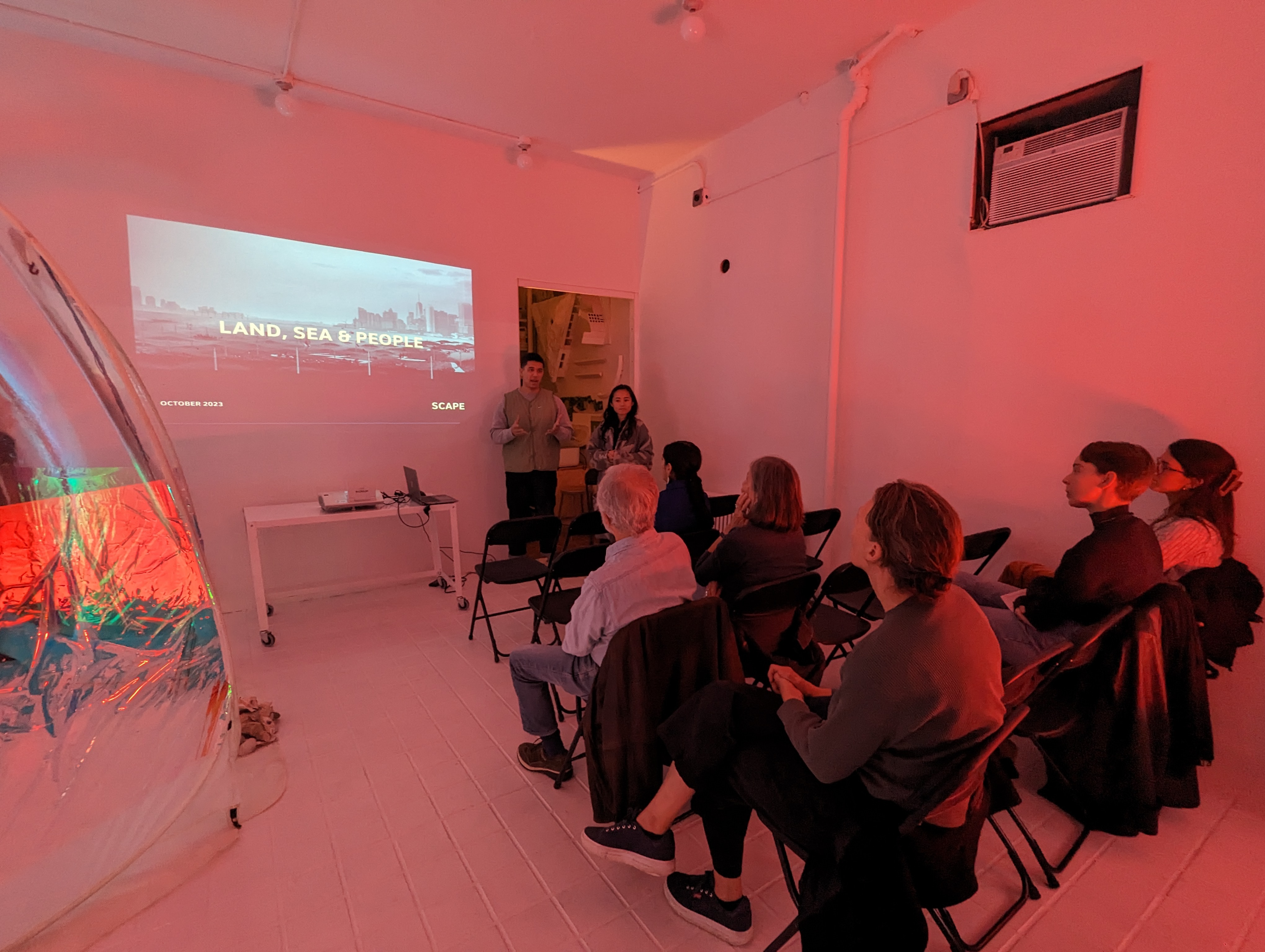
Photography by Leanne Nagata
Indigenous Society of Architecture, Planning, and Design’s (ISAPD) mission? Create a space for Indigenous voices and bodies of knowledge to be appreciated and strengthened while also supporting and increasing the representation of Indigenous Scholars and Peoples in this field. This is accomplished through a variety of programming including publications, lectures, workshops, and events for academia, the industry, and the public.
Anjelica S. Gallegos, a designer at Page’s Albuquerque office, co-founded ISAPD while a graduate student at the Yale School of Architecture in 2018. ISAPD has since evolved from a student chapter to a young fiscally sponsored organization.
“Using informed approaches can mend the disconnect between mainstream society and the environment,” said Gallegos. “For instance, the oversight of land acquisition often coincides with the erasure of Indigenous history and the invaluable site-specific traditional ecological knowledge. Researching and acknowledging Tribal site history represents the initial step towards developing inclusive solutions and designs that benefit all.”
Here's How Indigenous Knowledge is Enhancing the Architecture Industry
1. Sustainable Structures
%20Adobe%20Making%20Workshop%20-%20Rebuilding%20Connections%20to%20Traditional%20Pueblo%20Architecture%202.jpg)
This workshop was led by Francisco Uviña and Charelle Brown (ISAPD Co-Founder) with the support of AIA ABQ.
Indigenous communities worldwide developed time-tested principles and practices that seamlessly align with sustainable design. Looking to this wealth of knowledge for guidance can accelerate sustainability movements like The Paris Climate Agreement and green building certifications.
Indigenous architecture prioritizes the use of local materials – think of Adobe Brick, first used in North America by the Ancestral Pueblo people (Anasazi, Mogollon, and Hohokam), which is a combination of earth, water, and organic materials shaped into a block and dried in the sun. Opting for locally sourced materials reduces shipping distances by cutting energy and emissions associated with long-haul transportation. This approach significantly reduces a structure’s embodied carbon emissions while also lessening the strain on overused resources.
What about reducing operational energy? Not only do materials like Adobe Brick have a high thermal mass, but Indigenous building practices also use strategies that harness natural daylight for heating, cooling, and other thermal processes. In warm regions, Indigenous architecture employs techniques to minimize solar gain during the hottest parts of the day with features like thick walls, narrow windows, and shading devices. In cooler climates, insulation techniques and materials are used.
“Sustainable approaches include expanding the definition of ‘the client’ beyond immediate human stakeholders. This means understanding the historical and cultural context of a site, as well as data related to local ecosystems, climate, and land use. These factors collectively inform the project’s materiality, signage, and overall essence,” said Gallegos.
The built and natural environment are interconnected, meaning environmental responsibility goes hand-in-hand with social responsibility efforts. This expertise and thinking are invaluable in propelling the architecture field towards sustainable and regenerative solutions.
2. Acknowledging the History of a Place

With Tami Banh, the deputy project manager of Living Breakwaters, and Tama Whiting, design lead for Te Ara Tukutuku.
Indigenous communities are recognized for their profound preservation of stories. This storytelling is a traditional method to teach values, history, customs, and ways of life, highlighting a deep connection with the context of a site. So, it is no surprise that Indigenous designs are often also rooted in acknowledging historical context while building for the future.
The designs may incorporate elements that pay homage to the history and cultural heritage of a place. Traditional motifs, materials, and building techniques maintain continuity with the past. This approach enhances community connections by providing spaces where people can come together, celebrate their heritage, and strengthen their bonds.
Designs that acknowledge the past often also prioritize durability and quality. This focus on longevity reduces the need for frequent renovations and replacements, which can be resource-intensive and contribute to waste. In other words, this approach is more sustainable and promotes structures that can last decades while building community connections across generations.
By considering past generations, acknowledging the sites’ complex place and acquisition history, and other practical factors of the built environment, a project’s materials, signage, and essence can forge a lasting connection between past and future generations.
3. Community-Centered Design
In Indigenous culture, buildings are reflections of their inhabitants, meaning the designs are deeply rooted in the values, culture, and aspirations of the community it serves. For example, Earth Lodges (Plains Indigenous Peoples) are underground structures providing natural insulation and stability. The structures are often used for ceremonies or gatherings and reflect a deep connection to the earth.
The Indigenous emphasis on community and communal spaces can inform the design of urban environments to better foster a sense of belonging. Extensive outreach conversations and a deep commitment to delivering structures that meet a community’s needs will lead to more designs that authentically reflect neighborhoods’ needs, values, and principles.
Think What’s Possible when architecture is guided by Indigenous values and principles: more environmental responsible construction methods, more culturally sensitive approaches, and more community-driven facilities.
Click here to learn more about ISAPD.
